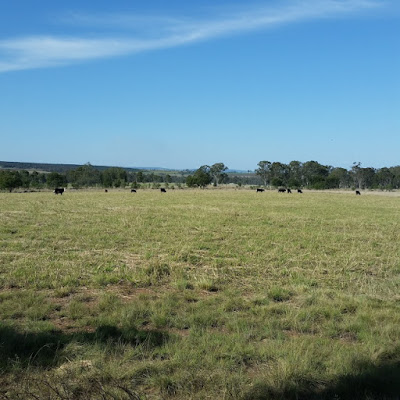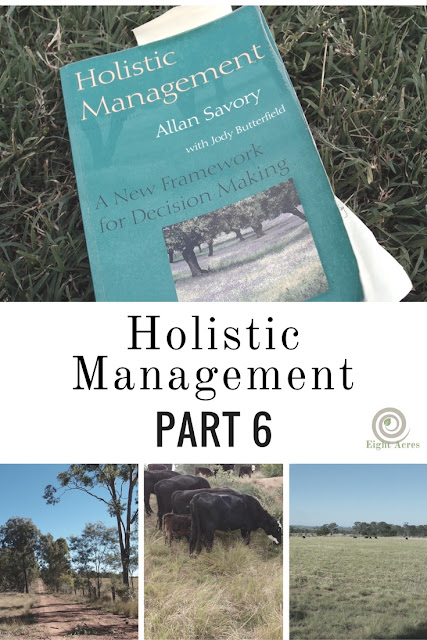Not every test will apply to all decisions, and in the end its a gut-feeling having reviewed all the tests, which helps you to decide whether a decision has passed overall. I'll briefly review each test here, there is a chapter for each, so if you think this will help you, consult the book for more detail. Some of the questions require a basic understanding of accounting and project economics, if you don't already have this, try to attend a local course or ask your accountant for an hour or so of lessons in this area.
Does this action address the root cause of the problem?
This test generally applies to actions intended to solve a particular problem. Finding the root cause is often difficult and may require some trial and error, but obviously an action targeted at the root cause will result in longer-term success than actions that merely address symptoms of a problem. For example, spraying pesticide on a crop instead of considering ways to improve the soil for healthier plants or reducing monocultures, or encouraging natural predators, to prevent future pest problems.
The best way to find a root cause is to keep asking "why". Why are bugs eating my crops? Because they are nutrient deficient. Why are they nutrient deficient? Because microbes have been damaged by fertiliser and pesticide use by previous farmers. That's really the last why in that chain, as you can now address the problem of building soil fertility rather than the pests themselves.
In this example, pesticide may be a short-term solution to get you through the season, as part of a long term plan to make other improvements that will eventually correct the root cause.
Weak link
Does this action strengthen (or attack) the weakest link in a process or life-cycle?
Whether you want to strengthen a system (production) or weaken a system (pests), the weakest link is the place to target your action. For example, pests often have a vulnerable stage when they are easier to kill. With Small Hive Beetle in our beehives, we've read about the lifecycle and worked out that the best time to kill them is when they crawl out of the hive as a larvae stage (haven't figured out exactly how yet). In your production system there's only advantage in strengthening the weakest link, as it will always restrict improvements in other areas. For example, we want to raise more cattle to larger size, but we don't have enough pasture at the moment, this is a weak link that we should take action to improve. Again, asking "why" will help you to find the weak link (for example, why can't we produce more? and then considering which answer is the true restriction).
Marginal reaction
Which action provides the greatest return, in terms of your holistic goal, for the time and money spent?
This question is used for comparing one or more actions to decide which should be completed first. We all have finite budgets and time to get things done around the farm, often we do the easy jobs first and the hard ones get left behind, but these might be the ones that could create the most benefit. I often see farmers ploughing a field over and over again, even when there's no rain forecast, its like they feel they are doing "something" however it may not be the best use of time and money, its just an easy job to sit on the tractor for a few hours.
I think this question needs to be used in conjunction with time management principles. We need to tackle urgent and important tasks first. Maintaining the tractor may not produce immediate return, but it is important to prevent failures in future. Castrating the bull calves may not provide immediate return, but it must be done before they get too big.
An example in our lives at the moment is working on our house vs working on our solar bore piepline system. We have lately decided to dedicate ourselves to getting the house finished so that we can move in, and this will enable many other tasks to be completed more easily. While the bore and pipeline is very important to us and will be necessary for getting gardens established around the house, it can wait until we have made more progress with the house (apart from urgent jobs such as castrating bull calves).
Gross profit analysis
Which enterprises contribute the most to covering the overheads of the business?
This test is interesting because it assumes that a business has diverse enterprises that individually contribute to the overall profits. Many farms have only one enterprise and should look at diversification in general (great advice from
Joel Salatin's "You Can Farm"). Assuming that you have diverse enterprises, this question looks at the additional cost of running each enterprise vs the profit from each enterprise. For example, with our honeybees, we should consider all the annual costs and time involved in building and maintaining each hive, vs the money (and neighbour goodwill) from selling honey, beeswax and bee colonies. We don't include our vehicle costs, even though they are critical to us being able to run the bees, we would still have the vehicle without bees. The honey spinner and other equipment costs should be divided over the useful life of the equipment to get an annual cost. I think this is very useful analysis. I find a lot of farmers marvel at their wonderful crop without considering the cost of all the inputs - fertiliser, seed, tractor fuel, and the very small remaining profit margin, especially if everyone had a good year and prices are low. This analysis will show you which enterprise makes the largest contribution AND where to look for improvements in other enterprises.
Sources of energy and money
Is the energy or money to be used in this action derived from the most appropriate source in terms of your holistic goal?
This test is about favouring renewable or sustainable energy sources over fossil fuels, and internal capital over external (loan) capital. There are additional questions as part of this test:
- Is the proposed use of money/energy providing infrastructure that will assist in reaching your holistic goal? - including knowledge/skills, buildings, roads, dams, machinery. Delay purchase of infrastructure until it is really needed, otherwise it just contributes to your overheads without contributing to profit.
- Is the proposed use of money/energy merely consumptive, with no lasting effect? - Many farm expenses are consumptive, including tractor fuel and services such as accounting. Check that this consumption moves you closer to your holistic goal.
- Is the proposed use of money/energy cyclical in that once initiated, it would not require more money, or the purchase of more energy? - Effectively this is an ongoing savings, for example by replacing a petrol pump with a solar pump, you need to consider the fuel savings in some of the other tests, and in this test you would favour a cyclic use if it also moved you towards your holistic goal.
- Is the proposed use of money/energy addictive in that once initiated, you risk an undesirable dependence on further inputs of energy of money? - Obviously addictive or ongoing spending commitments should be avoided. For example, once a farmer starts using fertilisers, especially those that are highly acidic, the microbial life in the soil is compromised. Each year more fertiliser (and more money) is required to get the same result and each year it is more difficult to rebuild what has been lost.

Sustainability
If you take this action, will it lead toward or away from the future resource based described in your holistic goal?
Where the previous tests have focused mainly on financial outcomes, this test now considers societal and environmental implications of your decisions (also known as triple bottom line accounting). In our holistic goal I listed the following as my future resource base: perennial pastures, dams and borewater, biodiversity, and the perspective of neighbours and community that we are hardworking and productive. In this test we should also consider our impact on ecosystem processes. "None of what is described in your future resource base will be attained quickly and with only a few actions. Yet every action, however small, that takes you in the direction you want to go is progress, and cumulatively small actions add up to a big difference". Therefore, actions that enhance or maintain perennial pastures, dams and bores, biodiversity and community perception, should be favoured over those that have detrimental or no effect.
Society and culture
How do you feel about this action? Will it improve your quality of life without adversely affecting others?
In our holistic goal I described quality of life as including: debt-free, minimal off-farm work, positive relationships with community, positive attitudes to our work. At the moment, we both work full-time, in an effort to achieve the first part of our quality of life statement (debt-free) but the second part reminds us not to take on more debt.
Putting it together
All of the tests that apply to a decision should be considered in order and then together to give you a feel for the appropriate action. Ideally you would only proceed with actions that pass all tests, however at time you will have no choice, but at least you will understand the impact on your holistic goal and how you may overcome this in the future.
I am looking forward to using these tests for decisions. I think at the moment we use some of them unconsciously, but it is helpful to have a framework that we can both follow to make decisions in future and work consistently towards our holistic goal.





















Leave a comment